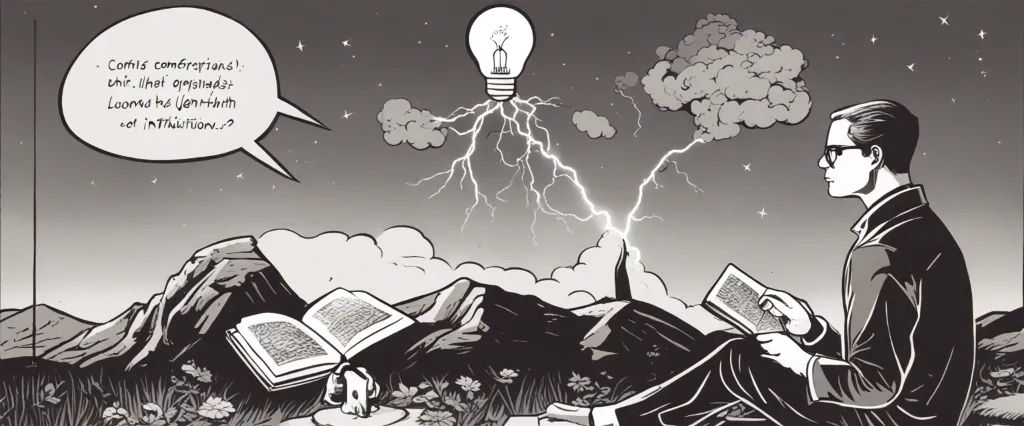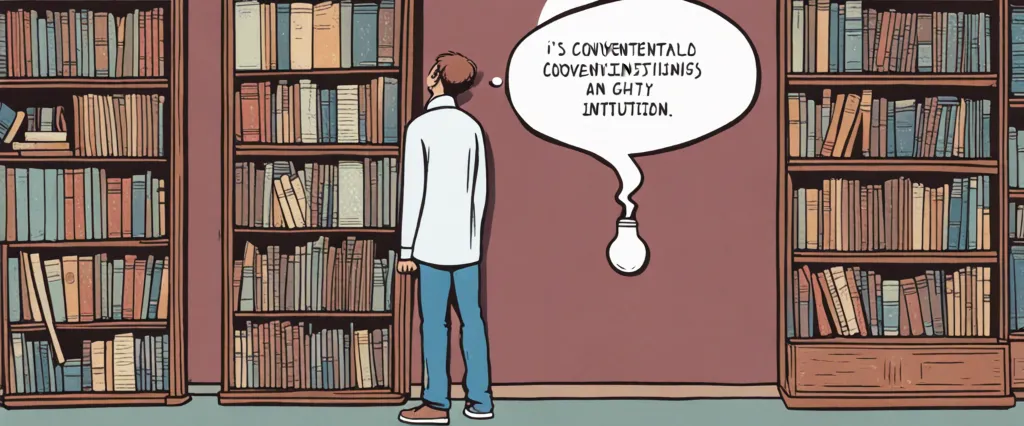In the groundbreaking book “Originals,” Adam M. Grant explores the fascinating realm of originality and creativity. With the aim of understanding what drives individuals to challenge the status quo and bring about meaningful change, Grant delves into the psychology behind successful innovators and disruptors. As a renowned organizational psychologist and professor at the Wharton School of the University of Pennsylvania, Adam M. Grant draws on his years of research and expertise to shed light on the power of originality in transforming our lives, organizations, and society as a whole. Through captivating anecdotes, compelling data, and thought-provoking insights, Grant invites readers to embrace their own unique voices and become the change-makers they aspire to be.
Chapter 1: Creative Destruction
Chapter 1 of “Originals” by Adam M. Grant discusses the concept of creative destruction and its role in driving progress and innovation. The chapter delves into the idea that in order to bring about positive change and challenge the status quo, individuals and organizations need to embrace the concept of creative destruction.
Grant begins by providing various examples of entrepreneurs and organizations who have disrupted existing industries and brought about radical change. He emphasizes that these “originals” are not always fearless risk-takers but are often careful planners who recognize the importance of calculated risks. He argues that taking intelligent risks and challenging conventional wisdom is crucial to driving progress and fostering innovation.
The chapter explores the reasons why many people hesitate to challenge the norm or pursue their creative ideas. Grant suggests that fear of failure, social pressures, and a culture that values conformity all contribute to the suppression of originality. He explains that original thinkers possess certain personality traits, such as curiosity, nonconformity, and willingness to take risks, which enable them to embrace creative destruction.
Grant introduces the concept of “Vuja de,” which refers to the ability to see something familiar with fresh eyes. This perspective allows individuals to question the status quo and identify potential opportunities for change. He highlights research that shows how successful entrepreneurs and innovators display this ability to challenge existing assumptions and envision new possibilities.
Overall, Chapter 1 in “Originals” emphasizes the importance of embracing creative destruction and encourages readers to challenge established norms and pursue their original ideas. It introduces key concepts and sets the stage for further exploration of the qualities and behaviors of successful original thinkers in subsequent chapters.
Chapter 2: Blind Inventors and One-Eyed Investors
Chapter 2 of “Originals” by Adam M. Grant, titled “Blind Inventors and One-Eyed Investors,” explores the relationship between originality and the ability to accurately predict success or failure. Grant discusses how both individuals and organizations often struggle to recognize the potential of groundbreaking ideas, resulting in missed opportunities and overlooked geniuses.
The chapter begins with the story of a young Steve Jobs, whose innovative ideas and futuristic visions were initially ignored by the technology industry. Jobs’ groundbreaking concepts like the personal computer and the mouse were met with skepticism and resistance. Grant highlights this as a common theme, where original thinkers often face resistance and skepticism from traditional and established structures.
The chapter then delves into the research on blind inventors and one-eyed investors. Grant explores the concept of “domain disfluency,” where individuals with limited expertise in a particular field can more accurately predict the success of creative ideas compared to experts within that field. This concept challenges the notion that expertise and domain knowledge are necessary and sufficient for predicting success.
Grant provides examples of artists, musicians, and entrepreneurs who have succeeded despite having limited industry knowledge. He emphasizes the importance of diverse perspectives and the ability to think outside the box when evaluating ideas.
The chapter concludes by highlighting the need for organizations and investors to incorporate open-mindedness and diverse perspectives to foster creativity and innovation. Grant suggests that a balance between expertise and fresh perspectives is necessary for accurate prediction and successful originality.
In summary, Chapter 2 of “Originals” explores the paradoxical relationship between originality and accurate prediction. It challenges the belief that experts are always the best judges of creative ideas and highlights the importance of embracing diverse perspectives for promoting innovation.
Chapter 3: Out on a Limb
Chapter 3: “Out on a Limb” of the book Originals by Adam M. Grant explores the importance of taking risks and embracing uncertainty in order to foster originality and bring about meaningful change. Grant argues that individuals who are comfortable with taking calculated risks are more likely to achieve remarkable success than those who avoid uncertainty.
The chapter begins by focusing on the story of Warby Parker, an eyewear company that disrupted the industry by selling affordable, stylish glasses online. The founders of Warby Parker, Dave Gilboa and Neil Blumenthal, took a risk by entering a highly competitive market dominated by a few major players. However, by embracing uncertainty and thinking differently, they were able to challenge the status quo successfully.
Grant introduces the concept of “vuja de” to emphasize the significance of embracing unfamiliarity and questioning assumptions when seeking to innovate. Rather than relying on traditional approaches or accepting the way things have always been done, original thinkers challenge the prevailing norms.
The chapter also highlights the research findings on the benefits of discomfort and cognitive dissonance that can lead to original ideas. Grant explores how individuals who learn to tolerate anxiety and ambiguity are more likely to come up with innovative solutions, as they are willing to challenge conventional wisdom to find new ways of doing things.
Furthermore, the chapter delves into the importance of learning from failures and cultivating resilience. Grant introduces the concept of “failing forward” and emphasizes the necessity of reframing failures as opportunities for growth and improvement.
In summary, Chapter 3 of Originals encourages readers to embrace uncertainty, challenge the status quo, and take calculated risks. It emphasizes the significance of discomfort, cognitive dissonance, and learning from failures in fostering originality. By stepping out of their comfort zones and embracing uncertainty, individuals can unlock their creative potential and bring about meaningful change in their lives and work.
Chapter 4: Fools Rush In

In Chapter 4 of “Originals” by Adam M. Grant, titled “Fools Rush In,” the focus shifts to the concept of procrastination and how it can actually be an asset for original thinkers. Grant challenges the common notion that procrastination is fundamentally negative and counterproductive, arguing that it can often yield better results than immediate action.
Grant begins by presenting various examples of individuals who thrived under the pressure of procrastination. He explains that a moderate level of procrastination can provide valuable time for creative incubation and self-reflection, leading to improved outcomes. Procrastination allows individuals to gather more information, generate additional ideas, and refine their work before executing it. Grant underscores that some of history’s greatest achievements were products of last-minute inspiration, citing Martin Luther King Jr.’s “I Have a Dream” speech and Leonardo da Vinci’s masterpiece, the Mona Lisa.
Moreover, Grant distinguishes between different types of procrastinators, highlighting the distinction between chronic and situational procrastinators. While chronic procrastinators habitually delay tasks and suffer from its negative consequences, situational procrastinators strategically delay, using it to their advantage. Situational procrastinators time their actions to maximize creativity and effectiveness.
Grant concludes the chapter by discussing practical strategies to embrace productive procrastination. These techniques include setting several interim deadlines, outsourcing parts of a project to gain fresh perspective, and using the “self-helping” practice where individuals imagine helping themselves in the future. By harnessing the power of procrastination, original thinkers can create innovative solutions and achieve exceptional results.
Chapter 5: Goldilocks and the Trojan Horse
Chapter 5 of “Originals” by Adam M. Grant, titled “Goldilocks and the Trojan Horse,” explores the concept of taking calculated risks as a means to foster innovation and increase the likelihood of success. The chapter revolves around the idea that the key to achieving optimal outcomes lies in finding the right balance between too much risk and too little risk.
Grant examines how individuals and organizations can uncover potential breakthroughs by embracing moderate risks through various case studies and research. He introduces the concept of “Vuja de,” which is the opposite of déjà vu. It refers to seeing something familiar but with a fresh perspective, and encourages individuals to question existing assumptions and explore new possibilities.
One aspect Grant focuses on is the tendency of entrepreneurs and original thinkers to be less risk-averse than one might expect. By highlighting real-life examples, such as Martin Luther King Jr. and the Selma March, he demonstrates how calculated risks can generate massive impact. Grant also explains the importance of measuring and mitigating risks rather than avoiding them altogether.
The chapter delves into the notion of intelligent recklessness, which involves taking well-thought-out risks by seeking and analyzing relevant information. Grant emphasizes that successful original thinkers are not fearless; instead, they acknowledge and appraise their fears, making informed decisions that minimize negative consequences while maximizing potential rewards. He provides actionable strategies, including seeking diverse perspectives, conducting small experiments, and surrounding oneself with devil’s advocates or “disagreeable” thinkers.
Ultimately, Chapter 5 explores the critical role of risk-taking in fostering innovation and originality. It encourages readers to challenge their assumptions and adopt a balanced approach to risk, one that is neither overly cautious nor recklessly impulsive, to drive positive change and achieve extraordinary results.
Chapter 6: Rocking the Boat and Keeping It Steady
Chapter 6 of “Originals” by Adam M. Grant, titled “Rocking the Boat and Keeping It Steady,” explores the concept of managing conformity and nonconformity within organizations. Grant argues that we often associate originality with rebellion, but it is possible to be original while still maintaining a positive relationship with the status quo.
The chapter begins by highlighting the potential benefits of promoting dissent within an organization. By encouraging people to challenge existing practices and propose new and innovative ideas, companies can experience fresh perspectives that lead to growth and improvement. Grant provides examples of organizations that embraced dissent successfully, such as online shoe retailer Zappos, which encourages employees to voice their opinions, even if they go against the status quo.
However, the author also acknowledges the potential risks and challenges that come with advocating for dissent. Companies need to find a balance between embracing originality and maintaining stability. Grant emphasizes the importance of creating a culture where dissenting views are welcomed and encouraged, but also managed in a way that doesn’t disrupt the organization entirely. He provides insights into techniques employed by successful leaders, such as maintaining open lines of communication, fostering psychological safety, and managing dissenting opinions constructively.
Grant suggests that organizations should not only focus on hiring individuals with original ideas but should also embrace their potential for nonconformity and encourage them to express their opinions. By creating an environment that values diverse perspectives and actively invites originality, companies can foster innovation and remain successful in a rapidly changing world.
Overall, “Rocking the Boat and Keeping It Steady” explores the delicate balance between advocating for originality and maintaining order within organizations. Grant provides practical advice and examples to help leaders effectively manage dissent and create a culture that embraces and harnesses the potential of original thinkers.
Chapter 7: Rethinking Groupthink
Chapter 7 of “Originals” by Adam M. Grant, titled “Rethinking Groupthink,” explores the concept of groupthink and proposes ways to challenge this phenomenon. Groupthink refers to the tendency for members of a group to conform to the majority opinion rather than critically evaluating alternatives, often leading to poor decision-making.
Grant begins by examining the historical example of the Bay of Pigs invasion in 1961, where a group of advisors failed to question President Kennedy’s plan, resulting in a disastrous outcome. He highlights the dangers of groupthink and the need for dissenting opinions to prevent detrimental outcomes. Through various studies and examples, Grant emphasizes that successful teams are characterized by a culture that encourages constructive disagreement and openness to diverse perspectives.
To challenge groupthink, Grant suggests several tactics. The first is to embrace the “devil’s advocate” role. By assigning someone within the group to purposefully critique the majority opinion, alternative viewpoints can be voiced and thoroughly evaluated. Grant also recommends appointing an external critic who has no vested interest in the group’s decision-making process. This neutral perspective encourages critical thinking and provides an objective viewpoint.
Another strategy Grant highlights is encouraging individuals to voice their doubts or concerns openly. By addressing potential risks head-on, teams can preemptively identify and alleviate potential pitfalls. Additionally, fostering an environment where dissenting opinions are welcomed and appreciated leads to more creative problem-solving and higher-quality decisions.
Grant concludes the chapter by stressing the importance of fostering psychological safety within teams, where individuals feel comfortable expressing their opinions without fear of judgment or retribution. This type of environment cultivates innovation and enables the emergence of original ideas.
In summary, Chapter 7 of “Originals” delves into the concept of groupthink, highlighting its risks and proposing strategies to challenge it. By encouraging dissent, embracing the role of devil’s advocate, inviting external criticism, openly discussing doubts and concerns, and fostering psychological safety, teams can escape the trap of groupthink and make better, more original decisions.

Chapter 8: Rebel with a Cause
Chapter 8: Rebel with a Cause of the book Originals by Adam M. Grant focuses on the concept of rebels and their role in fostering innovation and driving change. Grant challenges the assumption that rebels are disrupters or troublemakers, and instead presents them as necessary catalysts for progress.
The chapter begins by exploring the personality traits of rebels, highlighting their curiosity, nonconformity, and willingness to challenge the status quo. Rebels are individuals who question traditions and strive for improvement, often voicing their dissent against prevailing norms. While they may be seen as contrarian, their unique perspectives often lead to groundbreaking ideas and innovations.
Grant emphasizes the importance of constructive rebels within organizations, as they have the ability to challenge groupthink and push for positive change. He presents research showcasing how rebels bring alternative viewpoints, encouraging divergent thinking and preventing group polarization. However, rebels must also possess certain social skills to effectively communicate their ideas, as their tendency to challenge authority can make them less well-received by their peers. Therefore, rebels must balance their desire to question with an ability to persuade and inspire others to join their cause.
To foster a culture that encourages rebellion, Grant suggests that leaders should create conditions in which dissenting voices are welcomed. Establishing psychological safety within teams allows for open communication and constructive feedback, ultimately leading to more innovative solutions.
In summary, Chapter 8 of Originals highlights the importance of rebels in cultivating innovation. These individuals challenge mainstream thinking, provide alternative viewpoints, and foster a culture of dissent that is crucial for progress. By embracing and supporting their ideas, organizations can fuel creativity and drive positive change.
After Reading
In conclusion, Adam M. Grant’s book “Originals” offers profound insights into the world of creativity, innovation, and the power of non-conformity. Grant highlights the importance of challenging conventional wisdom, embracing discomfort, and taking calculated risks to create groundbreaking ideas. By analyzing various real-life examples and conducting extensive research, the author paves the way for readers to foster originality within themselves and others. Grant explores the mindset and strategies of successful originals, revealing how they navigate the fear of failure and mobilize their unique perspectives to inspire change. Through thought-provoking concepts and actionable advice, “Originals” encourages readers to challenge the status quo, embrace their authenticity, and unleash their creative potential. Grant’s book is an invaluable resource for individuals, entrepreneurs, and leaders seeking to make a lasting impact by defying norms and unleashing their creative potential.
1. Thinking, Fast and Slow” by Daniel Kahneman: Similar to “Originals,” this book delves into how our thoughts and decision-making process work. Kahneman explores the two systems of thinking we use, balancing intuitive and deliberate thinking, and revealing the cognitive biases that often hinder our ability to make original choices.
2. Outliers: The Story of Success” by Malcolm Gladwell: Inspired by similar themes as “Originals,” Gladwell explores why some individuals achieve extraordinary success. He challenges traditional stereotypes of success and highlights the importance of unique opportunities, timing, and hard work in shaping exceptional achievements.
3. The Innovator’s Dilemma” by Clayton M. Christensen: As Grant focuses on the idea of challenging conventional thinking, this book goes deeper into exploring disruption and innovation within organizations. Christensen explains why successful companies often fail to adapt to disruptive technologies, presenting insights into how to foster a culture of innovation and originality.
4. Quiet: The Power of Introverts in a World That Can’t Stop Talking” by Susan Cain: While “Originals” focuses on the power of unconventional thinking, “Quiet” explores the impact of introverts in a society that often values extroversion. Cain provides compelling research and anecdotes to showcase the unique strengths and contributions that introverts bring, challenging the assumption that innovation only comes from outgoing individuals.
5. Creativity, Inc.: Overcoming the Unseen Forces That Stand in the Way of True Inspiration” by Ed Catmull and Amy Wallace: This book explores the theme of nurturing creativity and originality within organizations. Catmull, co-founder of Pixar Animation Studios, shares insights into building a culture that encourages risks, learns from failures, and embraces unconventional ideas, offering practical advice for fostering innovation.




